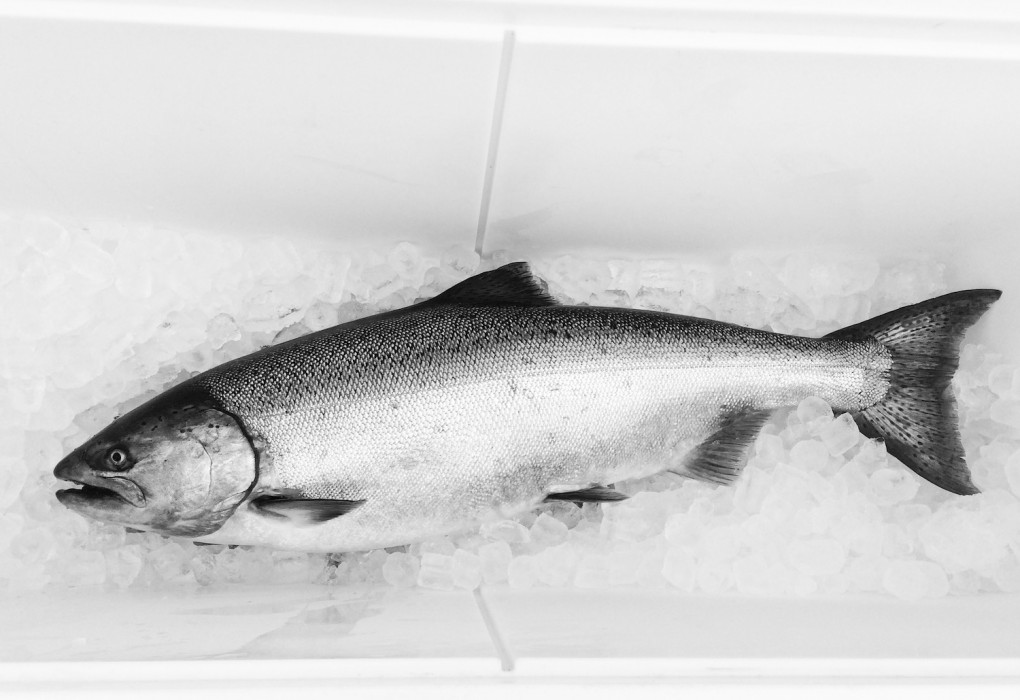A Letter to the Pacific Salmon Treaty Commissioners: The future of Native Chinook Salmon populations
The Pacific Salmon Treaty (1985) relates to the joint management of Pacific salmon stocks of mutual concern by Canada and the United States. The treaty exists because both countries harvest fish that originate from the respective countries in their ocean fisheries. For example, it is estimated that 25% of the Chinook that are born in Oregon rivers are harvested in British Columbia recreational and commercial fisheries. The negotiations are undertaken by 4 Pacific Salmon Commission members from each country, on a 10 year cycle.
River Steward Duncan Berry recently penned a letter to the commission to discuss problems that exists for his home river on the Central Oregon Coast:
To: United States, Pacific Salmon Commission
Mr. Robert Turner (Chair),
Mr. Phil Anderson,
Mr. McCoy Oatman, and
Mr. Charles Swanton
Canada, Pacific Salmon Commission
Ms. Rebecca Reid (Vice-Chair),
Mr. John McCulloch,
Mr. Murray Ned,
Mr. Bob Rezansoff
Dear Pacific Salmon Treaty Commissioners:
I write to you from the banks of the Salmon River on the central Oregon Coast, one of the watersheds used as an Exploitation Indicator Stock under the Pacific Salmon Treaty. I do so as someone concerned about the future of these fish, a resident of the watershed, Native Fish Society’s River Steward for the Salmon River, as well as a founder of Fishpeople Seafood, a nationally distributed seafood brand with landings and production facilities throughout Oregon, Washington, and Alaska.
I am aware of the coded-wire tag research that has been conducted here on the Salmon River in support of providing management recommendations to commercial ocean harvest, in-river recreational fisheries, and adult fish returns to the spawning grounds. In the Salmon River, this research specifically focuses on the hatchery fall Chinook salmon program operated by the Oregon Department of Fish and Wildlife with funding from the Pacific Salmon Commission.
My reason for concern and the motivation behind this letter, is that this hatchery program and the fishing effort targeting those hatchery fish are undermining the health, resilience, and diversity of our native Chinook populations. First, the hatchery program that is run in support of estimating exploitation rate has led to a pervasively high percentage of hatchery fish on the spawning grounds. The average percentage of hatchery fish found throughout the basin is 60%, as stated in the Oregon Department of Fish and Wildlife’s Hatchery Genetic Management Plan, and is well above a desired status of <10%. The Hatchery Scientific Review Group, which has conducted extensive research on the topic of interactions between hatchery and wild salmonids has concluded that this is a dangerously high level and negatively impacts the population by weakening the productivity of wild Chinook, ultimately jeopardizing their long term survival. Second, extensive recreational and commercial ocean fisheries, as well as freshwater sport fisheries, have focused their fishing efforts on this relatively high abundance of hatchery fish, which in turn, results in additional harvest pressure on the depressed wild population, and makes assessing the cumulative effects of these impacts difficult to adaptively manage. Without populations of wild chinook, we lose not only a unique genetic population of this iconic fish, but will also watch the overall presence of Chinook decline locally.
I am also aware of a tagging study that occurred in the Salmon River Estuary to estimate the difference between wild and hatchery exploitation rates, but have not seen any published results or findings. I respectfully request that you make this information publicly available upon completion, and that it is shared with ODFW, myself, and interested parties so that we can identify a possible transition away from such a risky hatchery program. It would also be valuable to take seriously the extinction risk model (Viable Salmonid Population) results from the ODFW’s Coastal Multispecies Management Plan.
Finally, the problem with wild Chinook populations that are indicator stocks and operated in concert with hatchery programs is not unique to the Salmon River. Just south of me on the Oregon Coast the Elk River is also a Pacific Salmon Treaty river with a hatchery program used for monitoring and evaluating indicator stocks for ocean fisheries. These rivers also share the same high extinction risk, which can be tied back to the negative effects from the operation of the hatchery program operated by ODFW with financial support from the Pacific Salmon Commission.
While I understand the social and diplomatic complexities around these indicator stocks, the philosophy that you can degrade small populations to effectively manage larger species units is an inherently flawed approach.
I urge the commission to act, finding a way to transition their exploitation indicator to a more representative wild population, and to take seriously the impacts this hatchery program is having on the productivity of wild fish in my homewaters, the Salmon River. Thank you for your attention to this important matter, and I look forward to your reply to my concerns.
Respectfully,
Duncan Berry, Resident, Lower Salmon River Valley
Conrad Gowell, Native Fish Society Fellowship Program Director
